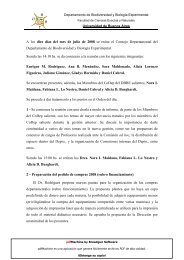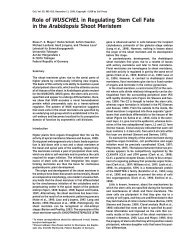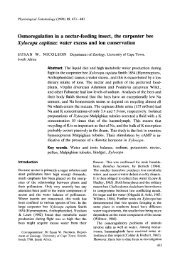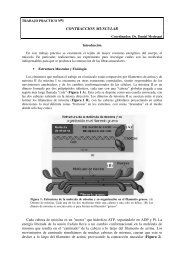The Aerobiology Pathway
The Aerobiology Pathway
The Aerobiology Pathway
Create successful ePaper yourself
Turn your PDF publications into a flip-book with our unique Google optimized e-Paper software.
2.1. Spore release<br />
Figure 2.1<br />
Spore liberation mechanisms: (a) deflation<br />
from raised fruiting body of Dictydium sp.,<br />
(b) mist pick-up of Cladosporium sp. (Pl.<br />
11.1), (c) bellows mechanism in Geastrium<br />
sp., (d) hygroscopic movements in<br />
Peronospora sp. (Pl. 9.68), (e) splash cup in<br />
Crucibulum vulgare, (f) water rupture in<br />
Deightoniella torulosa, (g) squirt gun (discomycete<br />
type) in Sclerotinia sclerotiorum (Pl.<br />
8.19), (h) squirt gun (Pyrenomycete type) in<br />
Sordaria fimicola (Pl. 8.28), (i) squirting<br />
mechanism in Pilobolus kleinii, (j) rounding<br />
of turgid cells in Entomophthora sp. (Pl.<br />
9.73), (k. l) ballistospore discharge in<br />
Agaricus sp. (Pl. 9.1). (Lacey, J., 1996, with<br />
permission from Mycological Research).<br />
Fungal spores however, vary greatly in size, shape, colour and method of release (Ingold,<br />
1971). <strong>The</strong>se various release mechanisms are essential for spores to escape the laminar<br />
boundary layer of still air to be dispersed in the turbulent boundary layer Fig. 1.1,<br />
(Gregory, 1973). Passive release of spores occurs, particularly in fungi growing on raised<br />
structures e.g. powdery mildew growing on plant leaves, where gusts of turbulence can<br />
penetrate closely enough to the substrate to detach spores. This is assisted in the case of<br />
powdery mildew by basipetal spore production, the oldest spores being raised away<br />
from the leaf on chains of progressively produced spores. However, many fungi have<br />
evolved active methods of spore liberation, some of which are illustrated in Fig. 2.1 (see<br />
also, Ingold, 1999).<br />
<strong>The</strong> concentration of some dry airborne spores, e.g. Cladosporium, can increase at<br />
the start of rainfall. Hirst and Stedman (1963) showed that both rapid air movement in<br />
advance of splashes and vibration can blow or tap spores into the air. This process is<br />
most effective when large drops collide with surfaces carrying spores that are loose or<br />
raised above the surface and is different from true rain-splash dispersal in which spores<br />
mix with the water rather than remaining dry (section 7, this chapter).<br />
16 THE AIR SPORA


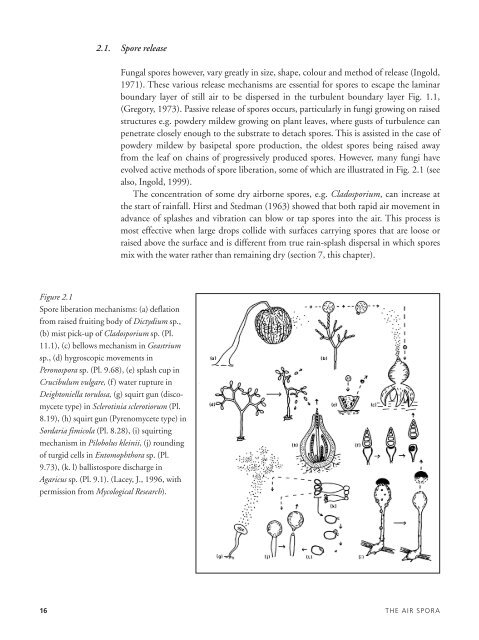

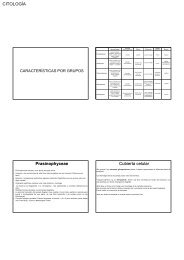


![Estructuras secretoras internas [4.64 MB]](https://img.yumpu.com/14294979/1/190x143/estructuras-secretoras-internas-464-mb.jpg?quality=85)
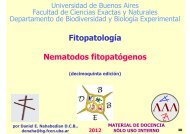
![anatomía y exomorfología [7.14 MB]](https://img.yumpu.com/12744163/1/190x143/anatomia-y-exomorfologia-714-mb.jpg?quality=85)
